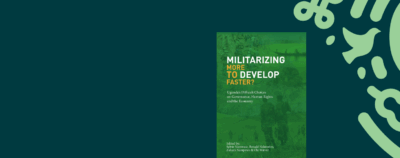Since March 2020, when the World Health Organization declared the Covid-19 outbreak a global pandemic, there have been more than 200 million confirmed cases worldwide, including almost 5 million deaths. The pandemic has functioned like a macroscopic x-ray, making visible a wide range of socioeconomic fault lines and political failures. From the contradictions of “essential work”—which even the Economist characterized as “a grim calculus” between life, death, and the economy—to what philosopher Judith Butler calls the “the racial and geopolitical differences in suffering,” the disruptions caused by the spread of Covid-19 have laid bare hierarchies of wealth, power, and privilege, further exacerbating existing inequalities both within and across nations. In the world’s wealthiest countries, most notably the United States, extreme economic disparities have contributed to higher morbidity rates among ethno-racial minorities and the poor. According to a Center for Disease Control and Prevention (CDC) report, longstanding systemic health and social inequalities have put people from racial and ethnic minority groups at increased risk of getting sick and dying from Covid-19.
On top of its disproportionate impact on the working class and communities of color, the coronavirus pandemic has significantly affected processes surrounding death, dying, and end-of-life care. It has transformed how we mourn, grieve, and bury our dead, ushering in an era of Zoom funerals, isolated deaths, and even mass interments in unmarked graves. These transformations, coupled with bureaucratic challenges linked to border closures and public health restrictions, have raised public awareness about a complex set of end-of-life issues like the difficulties of mourning across borders and the importance of post-mortem rituals when death is interrupted. While seemingly new, these are longstanding concerns for immigrant communities around the world, who have experienced the strange transgression of dying far from home in circumstances different than they may have anticipated.
As anthropologists Peter Metcalf and Richard Huntington argue in their landmark study of mortuary ritual, death makes manifest the most important cultural values by which people live their lives and evaluate their experiences. “Life becomes transparent against the background of death,” they write, “and fundamental social and cultural issues are revealed.” In my own work, I have attempted to show that fundamental political issues are also revealed in death, including the stakes of membership in national and religious communities, the scope of sovereign power and political authority, and the meaning of citizenship and belonging in contemporary multicultural societies. I am especially interested in how immigrants and minoritized groups navigate end-of-life decisions in countries where they face structural barriers to political inclusion and equal social standing. Acknowledging the vast diversity of migratory trajectories around the world, I see important commonalities in the experience of what I and others have termed “death out of place,” which speak to deep, existential questions about the significance of home and homeland in an increasingly transnational world.
The gravity of these topics was forefront in numerous articles published by international news outlets such as the New York Times and the Guardian during the early months of the pandemic. Stories with headlines such as “2 Brothers Died of Covid-19. They’re Being Denied Their Last Wish,” and “Mexican Families Struggle to Retrieve Loved Ones’ Remains from US” chronicled the bureaucratic hurdles and financial hardships faced by immigrant families seeking to repatriate the remains of their loved ones to ancestral homelands for burial. In interviews, people described the psychological toll that the inability to bury their family members in accordance with their last wishes had taken on them. Speaking to reporters, a recently widowed woman in the Mexican state of Puebla whose husband’s body lay in limbo in a New York City morgue because of a moratorium on the cross-border repatriations issued by the Mexican government said that, “If I could see him, even his body, then at least I would be at peace that he is gone. But I can’t be at peace now, not without seeing my husband again.” In France, a son who was unable to repatriate his father’s remains to his home village in Mali to be buried alongside his brothers and sisters confessed that, “Not having respected his last wishes . . . is heartbreaking.”
In a number of European countries, the pandemic has also helped expose another longstanding and consequential issue for religious minorities: the lack of appropriate cemeteries to bury their dead. In Italy, home to approximately 2.6 million Muslims, there are only 76 burial grounds across the country’s 8,000 municipalities with sections reserved for Muslim graves. Italian law stipulates that public cemeteries may provide for special and separate burial sections for non-Catholics but does not require them to do so. After struggling to find a cemetery to bury her mother after losing her to Covid-19, a twenty-three-year old Macedonian Muslim living in the Italian city of Pisogne told reporters that, “It is as if Italy forces you to repatriate your loved ones. I was so sorry that many families who live in small municipalities like mine, without Islamic cemetery areas, haven’t been able to give their loved ones a worthy burial.”
Similar quandaries are present in France, whose 6 million Muslims comprise close to 9 percent of the country’s total population. In spite of their sizable community, French Muslims face a severe shortage of burial grounds. Only 600 of the country’s 35,000 municipal cemeteries—less than 2 percent—have sections reserved for Islamic graves. Because of France’s commitment to the principle of laïcité and its strict regulation of expressions of religious faith and identity in the public sphere, the town councils tasked with managing the country’s cemeteries are not obligated to create or extend religious burial plots in public burial grounds. To complicate matters, several of the municipal cemeteries that do have Islamic sections, such as those in Bobigny and Seine Saint-Denis, outside of Paris, are already at full capacity.
Since French burial law stipulates that people must be buried in the municipality where they lived or died, Muslim leaders in areas of the country where Islamic burial plots are in short supply have come up with unusual solutions. In Lyon, a group of imams issued a fatwa allowing for the temporary burial of Muslims in non-Muslim burial grounds, noting that individuals could later be exhumed and reburied as needed. But as Chems-Eddine Hafiz, rector of the Grand Mosque of Paris observed, this is not a viable long-term solution. The shortage of Islamic burial grounds “has been going on for years,” he said, “and now we are paying a high price for it . . . The younger generations want to be totally French, and clearly willingness to be buried in France is a type of integration.”
Where migratory processes have resulted in spatial discontinuities between countries of birth and death, the act of burial serves as a means for migrants and their kin to assert belonging, attachment, and perhaps even loyalty to a particular country, community, or place. The peripatetic nature of migratory life can sometimes extend into death as questions that haunt migrants in life pose posthumous predicaments for their families. Where does a dead body belong? And what might end-of-life practices teach us about belonging? While the pandemic has helped bring to light the challenges and contradictions of mourning across borders, it has also revealed the significance of mortuary rituals when death is interrupted. This is especially true for immigrants and ethno-religious minorities, for whom questions of political inclusion and belonging are particularly salient. When the boundaries of the nation and its members are contested, burial decisions are political acts. They help confer a sense of fixity to identities that are more fluid or ambivalent in life.














Deeply insightful and a joy to read. A thought provoking piece in this most unusual and urgent of times.